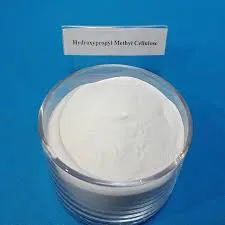
Dec . 15, 2024 08:01 Back to list
hydroxypropyl methylcellulose uses in tablets
The Uses of Hydroxypropyl Methylcellulose in Tablets
Hydroxypropyl Methylcellulose (HPMC) is a synthetic polymer derived from cellulose, a naturally occurring biopolymer. Due to its unique properties, HPMC has found extensive applications in the pharmaceutical industry, particularly in the formulation of tablets. This article explores the various uses of HPMC in tablet formulations and highlights its advantages in enhancing drug delivery systems.
1. Binder in Tablet Formulations
One of the primary uses of HPMC in tablet formulations is as a binder. Binders are crucial in the granulation process, helping to hold the powder particles together, creating a cohesive mass that can be compressed into tablets. HPMC is favored due to its excellent binding properties, which ensure the tablets maintain their integrity and do not break apart easily. It dissolves in water and promotes uniform distribution of active pharmaceutical ingredients (APIs) throughout the tablet matrix, enhancing the uniformity of dosage.
The controlled release of drugs is another significant application of HPMC in tablet formulations. HPMC can be used to create matrix systems that regulate the release of active ingredients over extended periods. This characteristic is particularly important for medications that require sustained therapeutic effects, allowing for improved patient compliance through reduced dosing frequency. By adjusting the grade and concentration of HPMC in the formulation, scientists can tailor the release profile to meet specific therapeutic needs.
3. Film Coating Agent
In addition to its role as a binder and controlled release agent, HPMC is widely used as a film coating agent for tablets. Film coatings enhance the appearance of tablets, making them more appealing to patients while also providing a protective barrier against environmental factors such as moisture and oxygen. HPMC-based film coatings are particularly advantageous due to their safety and non-toxic nature, making them suitable for a wide range of pharmaceutical products.
hydroxypropyl methylcellulose uses in tablets

4. Disintegrant Properties
HPMC does not just bind tablets; it can also aid in the disintegration process under certain conditions. Disintegration is essential for the quick release of the active ingredients in the gastrointestinal tract, particularly for immediate-release formulations. By incorporating HPMC with a proper formulation strategy, manufacturers can achieve rapid disintegration of tablets, ensuring that the therapeutic agents are released effectively and absorbable in the body.
5. Solubility Enhancement
Many drugs exhibit poor solubility, which can hinder their bioavailability. HPMC can help improve the solubility of poorly soluble drugs through its properties that facilitate wetting and dispersion. This ability to enhance solubility makes HPMC an invaluable component in the formulation of tablets containing low solubility drugs, thereby improving their therapeutic efficacy.
6. Safety and Compatibility
HPMC is generally regarded as safe and compatible with a wide range of excipients and active ingredients. Its non-toxic nature and lack of pharmacological activity make it an ideal choice for various therapeutic formulations, including those intended for sensitive populations such as children and the elderly. Additionally, HPMC's compatibility with other materials allows for the development of complex formulations that meet specific patient needs.
Conclusion
In conclusion, Hydroxypropyl Methylcellulose plays a multifaceted role in the formulation of tablets, acting as a binder, controlled release agent, film coating agent, disintegrant, and solubility enhancer. Its unique properties enhance the performance and stability of pharmaceutical products, ultimately contributing to improved therapeutic outcomes. As the pharmaceutical industry continues to innovate, the significance of HPMC in tablet formulations will undoubtedly expand, paving the way for more effective and patient-friendly drug delivery systems.
-
Versatile Hpmc Uses in Different Industries
NewsJun.19,2025
-
Redispersible Powder's Role in Enhancing Durability of Construction Products
NewsJun.19,2025
-
Hydroxyethyl Cellulose Applications Driving Green Industrial Processes
NewsJun.19,2025
-
Exploring Different Redispersible Polymer Powder
NewsJun.19,2025
-
Choosing the Right Mortar Bonding Agent
NewsJun.19,2025
-
Applications and Significance of China Hpmc in Modern Industries
NewsJun.19,2025







